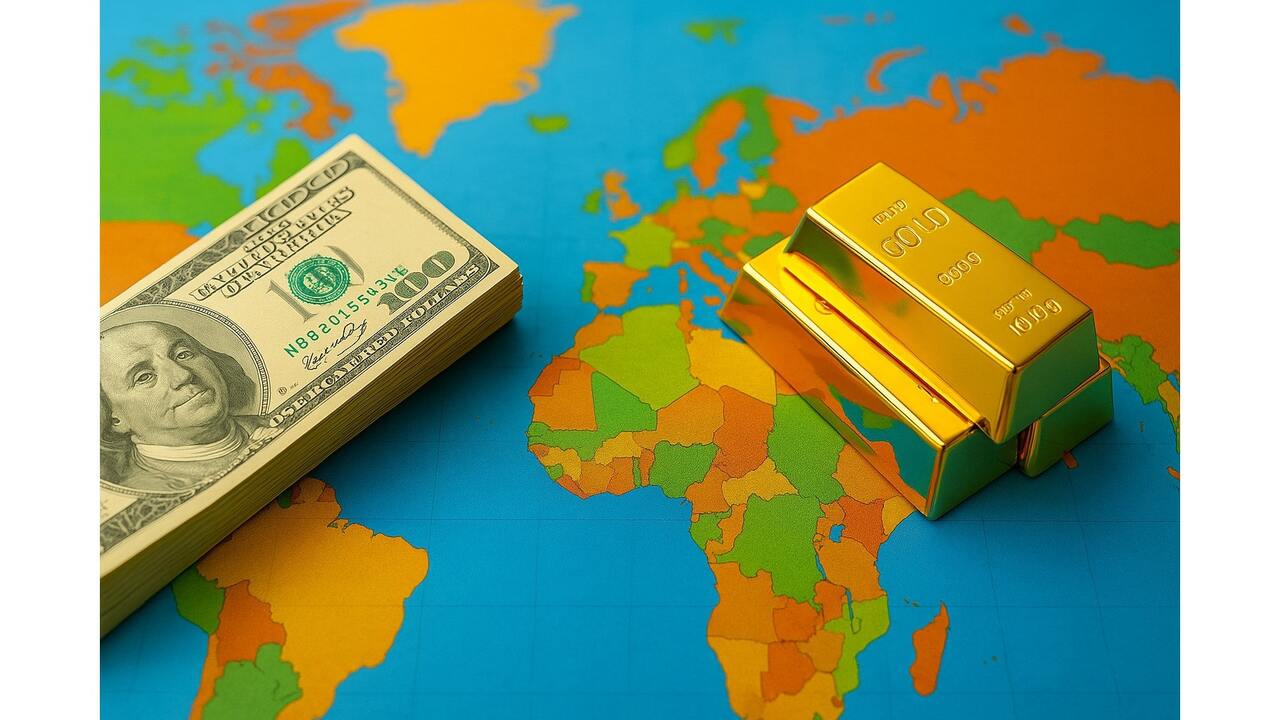(Money Metals News Service) In the latest episode of Money Metals Midweek Memo, host Mike Maharrey delivers an insightful breakdown of global gold demand trends in Q1 2025, highlighting a striking divide between Eastern and Western investors.
While Asian nations continue to accumulate gold at a torrid pace, American investors are largely retreating—raising important questions about investment psychology, inflation hedging, and financial preparedness.
Record Demand Amidst a Bull Market
Total global gold demand reached 1,226 tons in Q1 2025, according to World Gold Council data—marking the strongest quarterly figure since 2016.
Although this was only a 1% increase year-over-year, the dollar value of demand surged by 40%, reaching $111 billion, driven by rising gold prices and strong central bank and ETF activity.
Physical bar and coin demand jumped globally to 325.4 tons, 15% above the 5-year average, and significantly higher than the 317.3 tons recorded in Q1 2024. However, U.S. investors bucked the trend.
East Leads the Way: China and India Dominate
China was the standout performer, with demand for bars and coins soaring to 126.7 tons—a 47% jump quarter-over-quarter and a 12% increase year-over-year. This accounted for more than one-third of global retail gold investment. In response to surging demand, the Chinese government even expanded gold import quotas for commercial banks.
India, the world’s second-largest gold market, posted its seventh consecutive quarter of year-on-year gains in bar and coin demand, with a 7% rise. Seasonal factors slightly dampened quarter-over-quarter numbers, but demand remains historically robust.
Other Asian countries also posted substantial gains:
- Indonesia: +35%
- Singapore: +35%
- South Korea: +36%
- Thailand: +25%
- Malaysia: +34%
- Pakistan: +5%
Central Banks Still Buying Despite Slight Decline
Official central bank purchases totaled 244 tons in Q1, down 21% from Q1 2024 but 25% above the 5-year average. Poland led the way with 49 tons, followed by consistent purchases from China, Kazakhstan, Turkey, India, and the Czech Republic.
Notably, only 22% of purchases were officially reported to the IMF, suggesting unreported buying—particularly by China and sovereign wealth funds—remains substantial.
This reflects a broader trend of de-dollarization, as emerging market central banks seek to hedge against sanctions, U.S. debt, and fiscal instability.
ETF Demand Explodes—Especially in Asia
Investment demand via gold-backed ETFs spiked to 552 tons, a 170% increase year-over-year, making it the strongest quarter since early 2022. North American-based ETFs saw 134 tons of inflows—some likely from Canada, where physical demand rose 85%.
Asian ETF demand also surged by 34 tons, with most activity in China and India.
Total ETF inflows reached $21 billion, the second-highest quarterly inflow on record, behind only Q2 2020.
Jewelry Demand Weakens in Volume, Gains in Value
Globally, gold jewelry demand dropped 21% in volume to 380 tons due to high prices, but the dollar value increased 9% to $35 billion. Chinese jewelry demand hit a five-year low in tonnage, yet consumers spent nearly as much as last year—demonstrating a willingness to stretch budgets for gold amid price increases.
In India and the broader Middle East, cultural affinity for gold jewelry continues to support demand. In contrast to the West, 24-karat jewelry is common in Asia, where it is treated as both adornment and investment.
The U.S. Contrarian Stance
While global demand soared, U.S. bar and coin demand dropped to 19.3 tons—the lowest in nearly five years, a 22% decline year-over-year. Maharrey attributes this to a shift in political sentiment, with Republican leadership historically coinciding with lower retail gold buying.
Many conservative and libertarian-leaning investors see Republican administrations as economically optimistic, and therefore less in need of a hedge.
Yet Maharrey warns this is a flawed view: inflation is not an accident—it is official policy. A 2% annual depreciation target is built into the monetary system.
While Americans largely sold physical gold, they weren’t absent from the market entirely. ETF holdings in the U.S. grew significantly, though this exposes investors to counterparty risk. Maharrey emphasizes that owning physical gold remains the superior long-term hedge.
Scrap Gold Selling and Purity Realities
High prices have driven a wave of scrap gold selling, particularly in Europe, with consumers exchanging old jewelry for cash. Maharrey reminds listeners that most U.S. gold jewelry is 14-karat or less, meaning it’s far less pure—and valuable—than bullion coins like the American Gold Eagle.
In contrast, Asia’s 24-karat gold jewelry is both a cultural symbol and financial savings vehicle—reinforcing the region’s gold-positive mindset.
Final Thoughts: The Real Contrarians?
Despite the bull market and volatile global outlook, U.S. investors remain hesitant. Maharrey predicts that when the next economic shock strikes—possibly triggered by tariffs or debt bubbles—American gold demand will surge again.
Until then, the East is propping up the market. “The mindset is different,” Maharrey concludes. “In the U.S., we think dollars are king. In Asia, they’d rather have gold and silver.”

